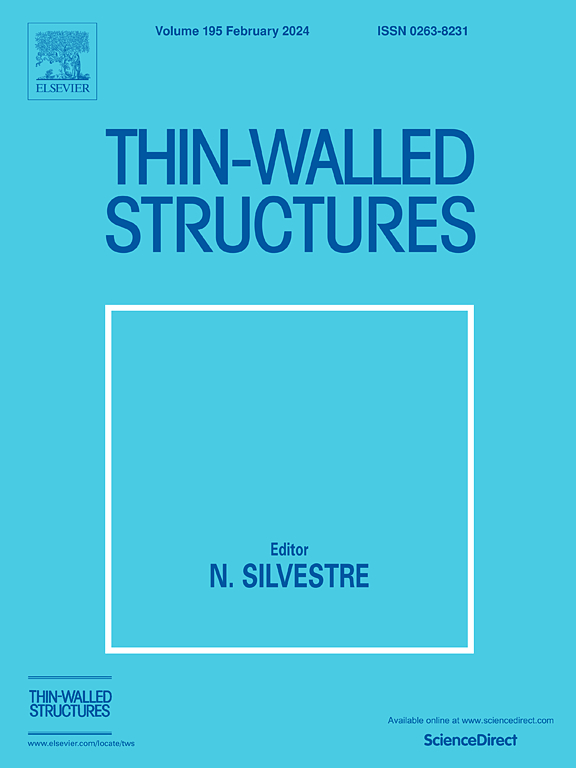Analytical and numerical predictions of elastoplastic buckling behaviors of the subsea lined pipelines with ovality defects under hydrostatic pressure
IF 5.7
1区 工程技术
Q1 ENGINEERING, CIVIL
引用次数: 0
Abstract
The subsea pipelines may deteriorate and/or be cracked after a long period of service. A cost-effective trenchless rehabilitation technology is to install a thin-walled steel liner inside the pipelines. However, elliptical defects may occur in the liner due to issues such as insufficient inflation, deformation of the host pipelines, and joint misalignment in practical engineering. Thus, this study aims to develop a systematic analytical model and numerical model for the elastic and inelastic buckling behaviors of the thin-walled oval steel liner, respectively. An admissible radial displacement function is introduced to describe the single-lobe deformation of the liner. The governing equations are established to trace the equilibrium paths by applying the theory of thin-walled shells and the principle of minimum potential energy. A two-dimensional finite element model is developed for the elastic and inelastic buckling performance of the liner. The analytical solutions of elastic buckling are in good agreement with other closed-form solutions, numerical results, and respective test results available in the literature. Finally, parametric evaluations are carried out in terms of ovality, non-uniform liner-pipeline gap, internal pressure, and liner yield strength.
静水压力下有椭圆形缺陷的海底衬里管道弹塑性屈曲行为的分析和数值预测
海底管道在长期使用后可能会老化和/或出现裂缝。一种经济有效的非开挖修复技术是在管道内安装薄壁钢衬垫。然而,在实际工程中,由于充气不足、主管道变形和接头错位等问题,衬垫可能会出现椭圆形缺陷。因此,本研究旨在分别针对薄壁椭圆形钢衬里的弹性和非弹性屈曲行为建立系统的分析模型和数值模型。研究引入了一个容许径向位移函数来描述衬板的单叶变形。通过应用薄壁壳理论和最小势能原理,建立了跟踪平衡路径的控制方程。针对衬垫的弹性和非弹性屈曲性能建立了二维有限元模型。弹性屈曲的解析解与其他闭式解、数值结果以及文献中的相关测试结果都非常吻合。最后,从椭圆度、非均匀衬垫-管道间隙、内部压力和衬垫屈服强度等方面进行了参数评估。
本文章由计算机程序翻译,如有差异,请以英文原文为准。
求助全文
约1分钟内获得全文
求助全文
来源期刊

Thin-Walled Structures
工程技术-工程:土木
CiteScore
9.60
自引率
20.30%
发文量
801
审稿时长
66 days
期刊介绍:
Thin-walled structures comprises an important and growing proportion of engineering construction with areas of application becoming increasingly diverse, ranging from aircraft, bridges, ships and oil rigs to storage vessels, industrial buildings and warehouses.
Many factors, including cost and weight economy, new materials and processes and the growth of powerful methods of analysis have contributed to this growth, and led to the need for a journal which concentrates specifically on structures in which problems arise due to the thinness of the walls. This field includes cold– formed sections, plate and shell structures, reinforced plastics structures and aluminium structures, and is of importance in many branches of engineering.
The primary criterion for consideration of papers in Thin–Walled Structures is that they must be concerned with thin–walled structures or the basic problems inherent in thin–walled structures. Provided this criterion is satisfied no restriction is placed on the type of construction, material or field of application. Papers on theory, experiment, design, etc., are published and it is expected that many papers will contain aspects of all three.
 求助内容:
求助内容: 应助结果提醒方式:
应助结果提醒方式:


